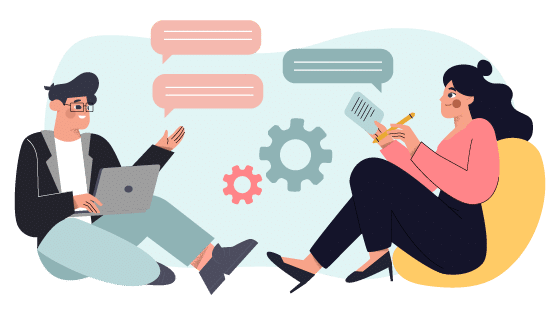Most managers can tell you that creativity isn’t something you can turn on and off like a faucet. Instead, it can either flow continuously – or completely run dry.
Whether an entry-level paper pusher or the top of the food chain, all company employees have great ideas. Unfortunately, without the right tools, that creativity can act a lot like a sink without a plug, washing all of that innovation down the drain. By using the right eLearning strategies, you have a better chance of taking advantage of the innovation and creativity your brilliant employees have to offer.
1. Remove the Hierarchy
Naturally, there’s a pecking order at work. It starts with the managing partners, moves down to supervisors and then trickles down to the garden-variety employees. But maintaining that hierarchy can seriously stifle creativity, especially when employees feel intimidated sharing their thoughts with the higher-ups. Offering learning tools that remove that hierarchy for a more level playing field can promote more frequent idea-sharing. A mentor program, for instance, or an organization social network or forum can create a more casual learning experience, encouraging everyone to share and share alike.
2. Set a Precedent
The best time to set the tone for a creative workplace is during your onboarding process. There, you can set a precedent by helping new hires see that your organization is interested in input from all levels of employee. By encouraging discussion questions during onboard training and ensuring that new hires are aware of the workplace environment, they’ll be more likely to open their mouths and share their creativity in the future.
3. Promote Continuous Learning
One of the best ways to stop the flow of creativity is to try and force it into certain parameters. It’s difficult to invite employees to a meeting and tell them to be creative. Instead, a flow of knowledge and sharing means creativity can happen anytime, anyplace. Aim for a continuous “drip” of information via social media, mLearning and quick, bite-sized training sessions so employees aren’t overwhelmed or put on the spot to be creative.
4. Utilize Storytelling
What’s more creative than a story? Setting the scene can really help employees visualize a problem and come up with a solution. With the right storytelling during training, you can help employees engage with the material as they picture how a scenario affects them and what they’d do to solve a potential conflict. Their answers to seemingly innocuous discussion questions after storytelling, role playing or even a short game can offer organic innovation for your organization.
5. Create an Informal Learning Space
A quiet boardroom can be seriously intimidating and can stifle creativity. So ditch the formal spaces and aim for something a little more casual: The break room can be a treasure trove of creativity, but you can also try lunch time training or utilize sharing on Facebook. Without the constraints of boardroom decorum during training, employees can feel more comfortable in sharing thoughts and ideas.
Don’t run the risk of innovation running dry because of your training methods. By working to foster and respect the thoughts of your employees from the start, you’ll welcome a continuous flow of ideas, creativity and innovation.





